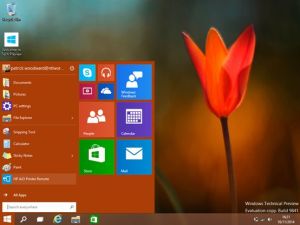 Windows 8 has been around for a little while now, so I thought it was time for an update, see how it is being received, and what people are saying.
Windows 8 has been around for a little while now, so I thought it was time for an update, see how it is being received, and what people are saying.
Well, mostly the response has been quite negative. Users are confused by its so called “Modern” display, which consists of “tiles”, taking you to programmes which don’t work as well as they used to.
For some people, touch screen users in particular, the tiles will offer a great new way of interacting with the computer, but for many, they really are not very helpful. Add to that the absence of the traditional Start button, and it’s a recipe for customer dissatisfacttion. However, all is not lost, and buying a Windows 8 machine need not be the disaster you fear.
On the plus side, Windows 8 is stable and reliable – unlike the old Vista, which was retired early due to numerous instability issues. By all accounts Win 8 works well. It’s just working with it that’s a problem. However, some of Win 8’s quirks can be overcome.
The first thing is to know that one of the tiles says “desktop”. Clicking on this tile will take you to a more traditional screen from which to load your programs, surf the web, send emails etc. There are a number of helpful programs you can use so that it automatically opens here, and gives you a traditional Start button as well. See for instance Classic Shell. Avoid all the tiled programs and go straight to this.
Stunned by the negative customer response to Win 8, Microsoft have now launched Windows 8.1. But beware, although this addresses some of the issues, it doesn’t solve everything, and the so called Start button it provides is not the same as the traditional one.
Windows 8.1 has made some things easier, but the much vaunted replacement of the Start button is not really all it seems. All it appears to do is toggle between the Desktop and “Modern” views. Back to Classic Shell then.
The upgrade process from 8 to 8.1 is not without its problems. First, the upgrade is only available in the Windows Store (Modern mode), and only if your PC is ready for it, with all Updates in place.
Next, in 8.1, Microsoft really want you to have a Microsoft Account. Such an account enables you to sync data between devices and download apps, but many will not want this – it also allows Microsoft to track your activity! In Win 8, it was possible to set things up without an account. In the upgrade process to 8.1 this is still possible, but very hard to find.
I have recently discovered that, at the moment, Microsoft are only offering 2 years support for Windows 8 if you do not upgrade to 8.1. This is disgraceful, especially with the upgrade process so opaque. Hopefully, at some point they will put 8.1 as a routine upgrade in the regular updates process, rather like what happened with Windows XP service Pack 3.
Finally, back to the Microsoft Account controversy, and the new MS Office 2013. The latest version of Office requires you to have a Microsoft Account. I have not found a way of setting it up without one. So, again I would not necessarily recommend Office 2013 for domestic users, as free alternatives like Libre Office are available. Pre 2007 versions of Office will not work with Windows 8, although they do work with Windows 7.
 Needless to say, a lot of users are a bit annoyed about this. see the user forum here.
Needless to say, a lot of users are a bit annoyed about this. see the user forum here. 




